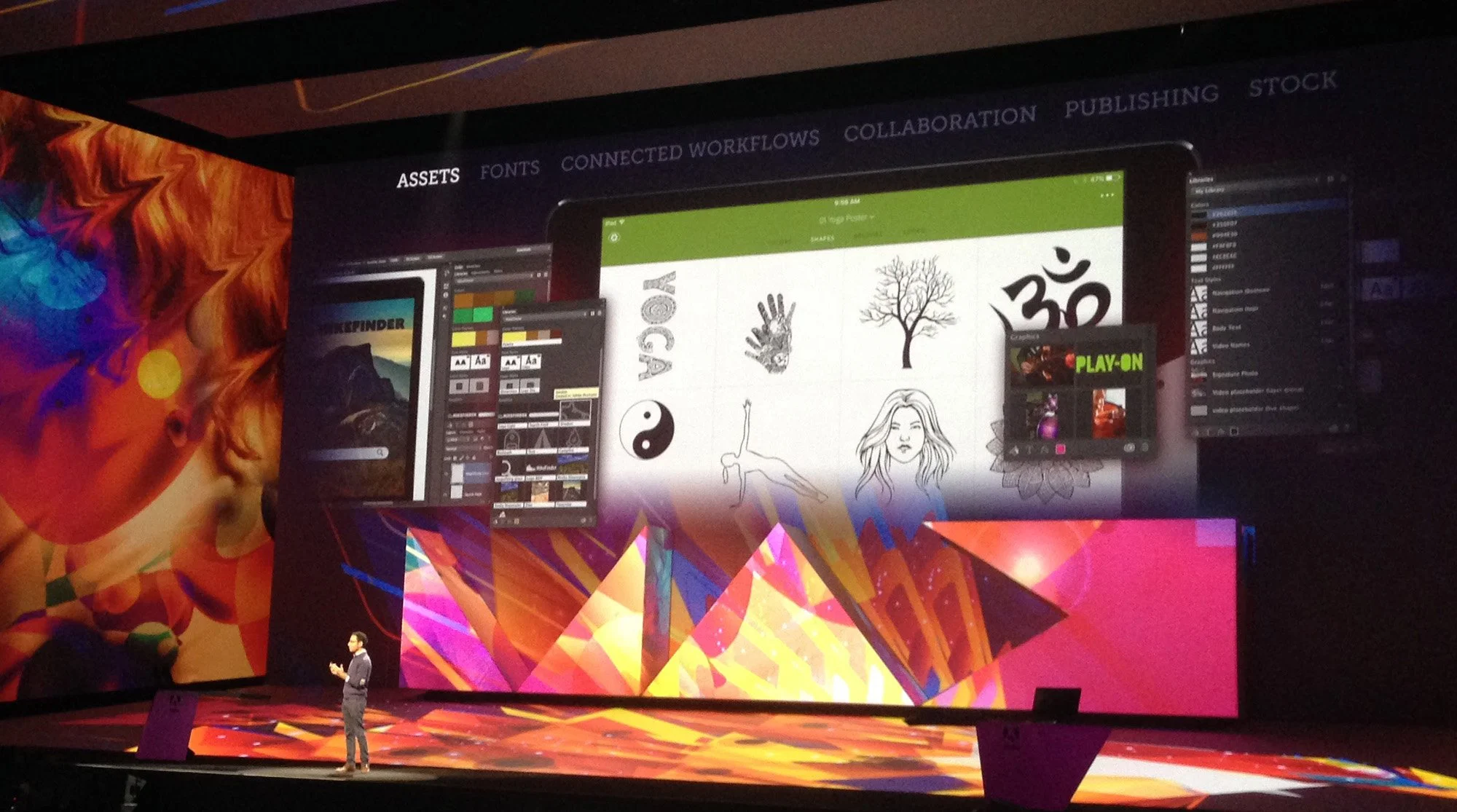Design for AI
Adobe ☁︎ 2018 - 2020
Director of Product Management, Creative Assistant
responsibilities
In this role, I was the lead Product Manager for the Adobe Sensei (now Firefly) AI/ML Platform’s foray into incubating a “Creative Assistant” (Agentic UI).
The charter was to design and build an experience we could integrate into the creative tools—e.g. Photoshop. My team and I were tasked with identifying the core users, use cases, data/model requirements, and any other details necessary to create an innovative, best-in-class experience for the first-ever, Generative AI creative agent for Adobe.
1 : Find the Opportunities
Lorem ipsum.
2 : GeneratE interest
I made sure to engage with product teams (Photoshop, Illustrator, etc.) early and often, in order to develop the best ideas for how Adobe cloud services could help customers of their product and the collective whole.
We convened regularly to brainstorm ideas and align on a shared understanding of our users. Since Adobe products at the time behaved like islands, we decided to explore a new, cross-platform, app-agnostic service which we named CC Libraries.
We created the first Creative Cloud Libraries “pitch deck” to share with VPs and gain support and investments.
3 : ActivatE Teams
As the concept was shared, more teams quickly grew excited about the ideas forming with CC Libraries, and developers were especially eager to start coding and testing.
A small group of engineers was assigned to build the first prototypes, and I was tasked to continue engagement with design, research, and stakeholders to shape and solidify a rapidly developing MVP.
Example methods that I used to guide the team(s) during this time include:
User journey mapping and prototypes
Customer research and discovery
Roadmap, sprint and long-term planning
Spec and PRD development
4 : Lock an MVP
Throughout the following months, design, product, engineering and marketing collaborated and iterated on all aspects of CC Libraries — the experience within the desktop apps, the mobile apps and the web, as well as any backend services, platform enhancements, on-device file syncing services, and other infrastructure work necessary to run the features smoothly and performantly.
Research was engaged in the process, as well, to bring prototypes (paper and functional) to customers, gathering useful insights on the usability of CC Libraries, and how we needed to improve it in order to meet our MVP goals.
As results returned, I delivered regular updates to leadership regarding our progress, reactions from customers, confidence in completing the MVP in time for the MAX conference, and more.
5 : Shipping 1.0
The first iteration of CC Libraries was announced at Adobe MAX during a Keynote address. The MVP released initially supported integrations with Photoshop ,one new Adobe mobile app (Brush), and the CC Assets website.
Getting it ready for launch included well-choreographed engineering sprints, multi-user, cross-region load testing, bug bashes, executive checkpoints, and much more. I worked with the Program Manager to ensure what the team built matched expectations. I also began to prepare the marketing, sales, and evangelists with feature walkthroughs and brown bags.
6 : Shipping 2.0 & Beyond
The initial launch was just the start for CC Libraries. Over the course of the next few years, we continued to deliver updates that included:
Support for more apps (Premier, Dreamweaver, etc.)
More asset types (after colors, brushes we added layer styles, text styles and more)
Improved sharing features
Bug fixes, and more.
After its initial launch, CC Libraries became one of the most popular and repeatedly used new features that Photoshop had released in years.





